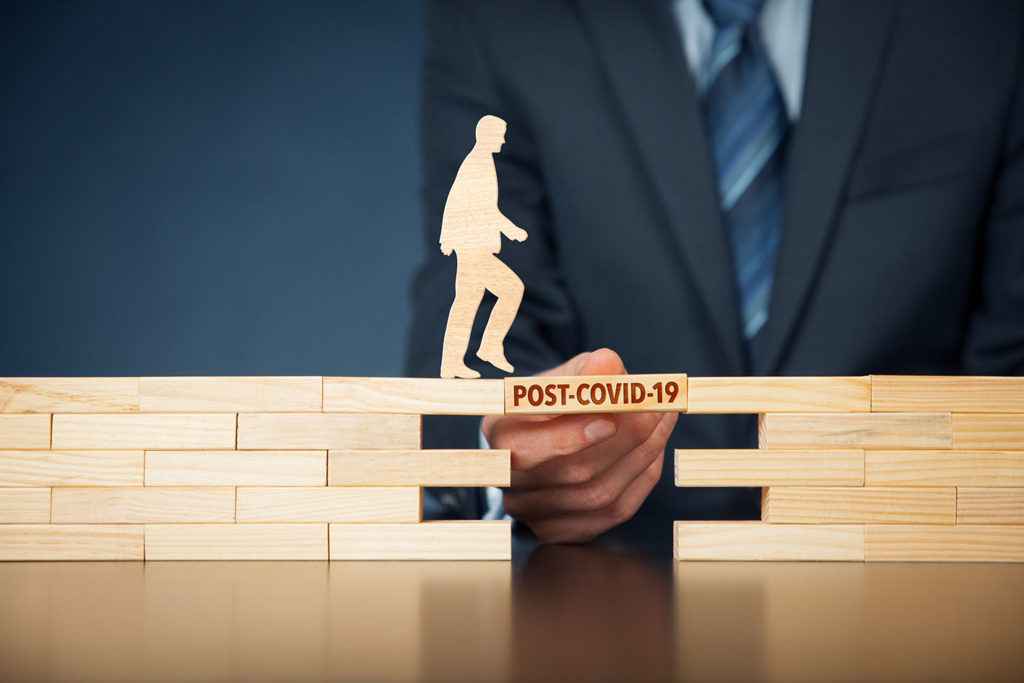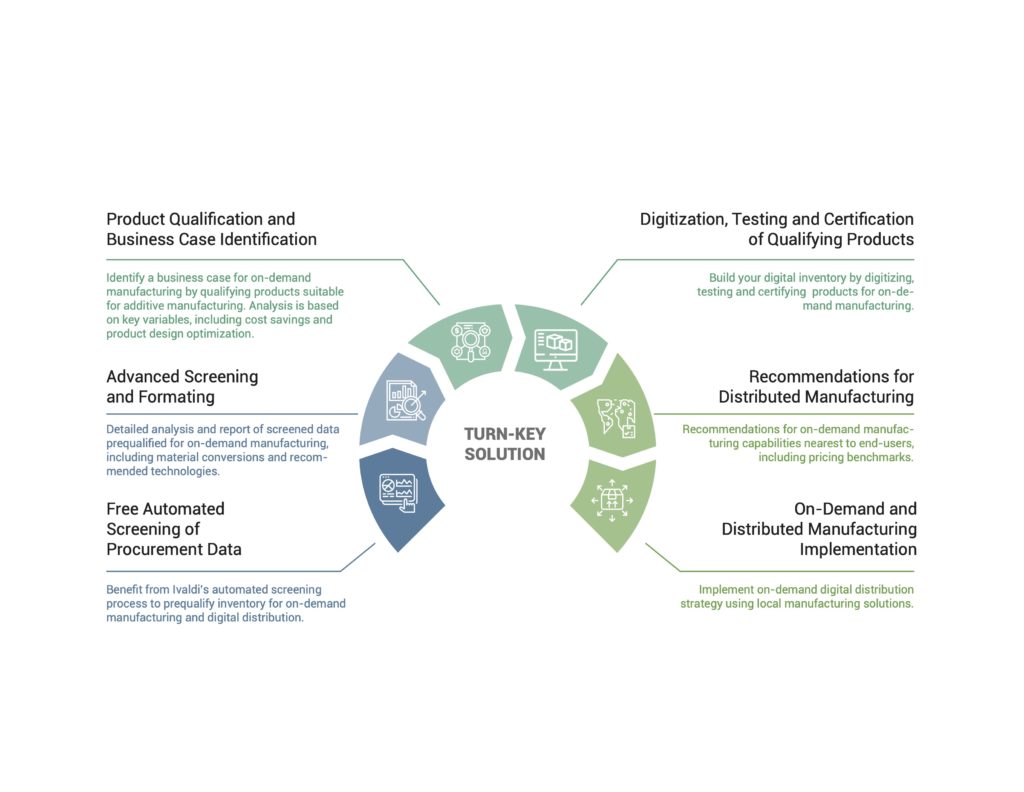
Words of Nora TOURE
As most European countries and states in the US are initiating a post-COVID-19 phase and lifting some of their restrictions, I can’t help but think about what’s next for our industry.
We probably can all agree that the COVID-19 crisis got 3D printing “on the map”. I hate to think about this pandemic in any positive way at all, but I got to say, as an industry, it triggered the best in us. We started working together, towards a same goal, organizing ourselves on an individual, but also on a corporate level, forcing us sometimes to refocus on our core business and technology.
In just a couple of months, over a hundred of 3D printing COVID-19 responses, and probably millions of 3D printed personal protective equipment pieces later, here we are, trying to get back to business as usual.
But what does business as usual mean in a post-COVID-19 world?
Have priorities changed for our customers? Is there still room for additive manufacturing?
How do we make our small, and sometimes not so small, 3D printing business to survive all this? Grow and thrive from this unprecedented crisis?
What does business as usual mean in a post-COVID-19 world?
As we step away from manufacturing free parts for first-respondents, let’s maintain some of the maker spirit we all went back into during this crisis.
A few weeks ago, I wrote about organizing 3D printing for emergency responses, covering some of the technical challenges of the 3D printing responses to COVID-19 and the need for a global and coordinated answer. Having a global and quickly deployable emergency manufacturing response solution to face catastrophes, sanitary, economic or political crisis has to be a top priority. And additive manufacturing has a role to play in being one of the tools in this global toolkit. We’ve proved it a million times the last couple of months.
With that being said, getting back into business as usual means getting back into the habit of charging customers for products and services we are providing. Catching up with our internal roadmap. Meeting our 2020 KPIs if we still can. Re-hiring our talents we had to let go. Growing. Thriving. Surviving COVID-19.
As we’re re-shifting back into business as usual, though, we might have to adapt our businesses to our customers’ new priorities in light of the worldwide recession. I can’t talk for all 3D printing companies obviously, but from my experience with Ivaldi Group, we have found a new business as usual. We have gone from providing distributed manufacturing solutions to a select number of customers to opening up our expertise by offering consultancy services and automated tools to heavy industries and first-necessity industries who are lacking the flexibility of a rapidly deployable distributed manufacturing solution. The problem we elected to answer is that most companies don’t have a clear and organized view of their procurement data enabling them to quickly assess rapid-manufacturing solutions. We believe it is fundamental to know what we’re dealing with as a starting point before implementing drastic changes into the supply chain. And we’ve decided to help by doing just that.

Whatever your niche expertise in 3D printing is, think about how you can adapt it to these industries who have been hit the hardest by the COVID-19 crisis.
Is there still room for additive manufacturing in light of new top priorities?
Chances are, at least a few of your major clients have been impacted by COVID-19, or are about to be impacted the longer the crisis goes.
Will their business priorities and decisions change? Probably.
Is it a good thing for you? Maybe.
I bet meeting 2020 KPIs is the #1 priority for you and, guess what, for your customers too. KPIs vary from one business to another, but signing customers while reducing production costs is probably not too far from the top of the list for everyone.
With that in mind, what role is there for additive manufacturing in helping our customers meet their KPIs?
The usual shebang is still valid: faster production, cost-effectiveness, easy operator training, no minimum quantity, variety of available materials…
And then, there is more:
As we’ve witnessed the world going crazy over ill-managed stocks of essential goods (I am definitely not talking about your toilet paper but rather essential PPE items), and the 3D printing community, among other unrelated industries, stepping up to fix failing supply chains, we need to look into the root-cause: no country is self-sufficient anymore. Not even China.
There is room for new business models. It is becoming critical to have, even just as a back-up, but ideally for every-day production as well, a global distributed manufacturing solution in place.
And that is definitely something additive manufacturing can help with. But it’s probably not something we can do alone. We will need to work with public institutions and our customers towards this objective.
So, the short answer is: yes, there is still room for additive manufacturing. Probably more than ever actually. It’s up to us to find the right angle for everyone else to see what’s obvious to us.
How do we survive this crisis, and even thrive from this situation?
Whatever the size of our businesses, we’ve all been impacted at various degrees. Our industry is not a stand-alone industry. We are a technology; we exist thanks to our end-users. End-users who are not robots, but human beings, who are already busy refocusing their own business, dealing with remote-working, the ton of online webinars and digital events they’re either attending or presenting to, their kids, the dog and the pile of dishes to be washed, in addition to being scared as hell from catching this disease from their last trip to the grocery store.
So, how do we survive this crisis and bounce back?
As stated above, here is an opportunity to refocus on our core businesses too.
Customers who didn’t know anything about additive manufacturing before COVID-19 won’t come out of this crisis as experts in 3D printing. There will still be, maybe even more than before actually, a need to educate our customers, at various levels, from beginner, early-stage to advanced and in-depth work.
For the most advanced clients, those who are already aware of the benefits of an additive manufacturing strategy for their core business, it will be fundamental to secure the position of 3D printing based on their new priorities.
Let’s also utilize this time to continue our worldwide reconnections with other 3D printing professionals, thanks to online conferences, webinars, meetups etc…
Even as countries open up their borders, travel restrictions initiated by companies will be extended for the next few months, some might even say, until the end of the year. We need to think of a way to still conduct business while missing a good handshake that closes a deal.
Let’s also reflect on how 3D printers can be more autonomous and more remote-work friendly. I, for one, would like to see more 3D printer manufacturers / software providers collaborations in the future.
I am sure we can come out of this crisis stronger, more focused, and with an actual plan to, maybe not save the world, but at least making it a step closer to being efficiently connected and collaborative.
About Nora Toure
Founder @Women in 3D Printing | VP, Strategy @Ivaldi Group | TEDx Speaker | 40Under40 Bay Area
With 10+ years’ experience in additive manufacturing, Nora Toure has a deep understanding and experience of the manufacturing ecosystem.
Her latest publication, “Organizing Additive Manufacturing For Rapid-Emergency-Responses”, covers some of the technical challenges of the 3D printing responses to COVID-19 and the need for a global & coordinated answer.
This article was originally published in the May-June issue of 3D ADEPT Mag. Remember, you can post free of charge job opportunities in the AM Industry on 3D ADEPT Media or look for a job via our job board. Make sure to follow us on our social networks and subscribe to our weekly newsletter : Facebook, Twitter, LinkedIn & Instagram ! If you want to be featured in the next issue of our digital magazine or if you hear a story that needs to be heard, make sure to send it to contact@3dadept.com






